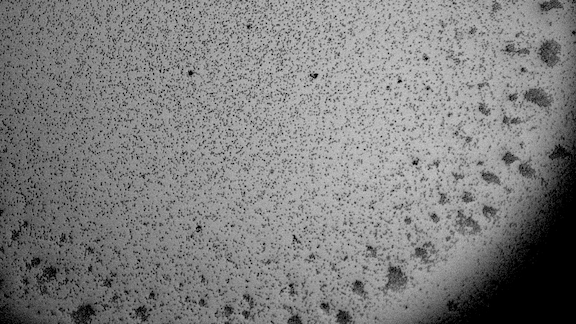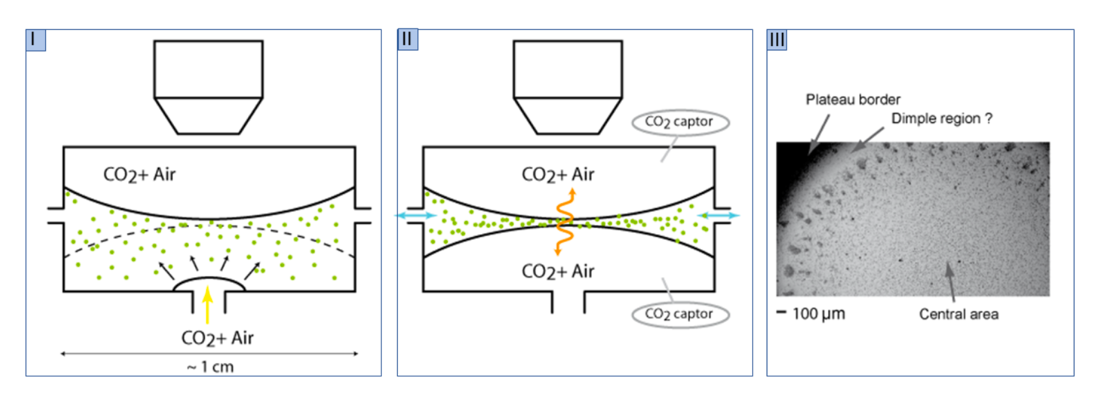- Share
- Share on Facebook
- Share on X
- Share on LinkedIn
Recruitment

Whether it's to purify the air of fine particle pollution, or to obtain gases, our need for filtration and gas separation is growing rapidly.
This need is crucial in the context of global warming, since even if our CO2 emissions were to become zero today, it will probably also be necessary to capture CO2 from the atmosphere in an attempt to stem the rise in temperature at the Earth's surface. As CO2 is present in the atmosphere in concentrations of the order of 0.04%, the volumes of air to be filtered are gigantic, and it is necessary to develop separation processes that are both energy-efficient and fast.
Among the various techniques used, the use of membranes, which form a permeable barrier between two media through which the various gaseous compounds are filtered according to their size, diffusivity or solubility in the membranes, is rapidly expanding. However, these membranes clog up easily, which is a huge problem. To circumvent these problems, it has been proposed to use aqueous foams, made up of a myriad of liquid films acting as selective membranes to separate the CO2 that solubilizes in the liquid phase and the air that remains mainly in the bubbles.
Additionally, adding small algae in the liquid phase would allow to directly convert the captured CO2 into biomass. In this problem, several time scales are involved: that of solubilization, of diffusion through the film, of CO2 consumption, or of the flow across the film and its boundaries.
To advance our understanding of this problem, we propose a study of the dynamics of CO2 transfer and capture through a single film. In this internship, the approach will be essentially experimental, while theoretical development could also be considered through advection-diffusion models for transport. The study configuration envisaged is as follows: a single soap film, potentially seeded with algae, will be produced in a microfluidic chip (see Figure). Mixtures of CO2 and air will be injected on both side of the film. The liquid phase may be renewed by imposing a flow between two of its extremities, as would be the case in a foam through the action of gravity-induced drainage or injection of fresh liquid by the operators. Several quantities will be monitored over time: the CO2 content on each side of the film, the quantity of trapped algae, their organization, their flow, and the CO2 concentration in the liquid phase. These experiments will be carried out for different gas proportions, liquid flows, and types and concentrations of algae. The biological aspects will be dealt with in collaboration with the Cell & Plant Physiology Laboratory (LPCV), that is hosted in CEA Grenoble.

The trainee, M2 level or equivalent, should have a good knowledge of thermodynamics and soft matter or fluid mechanics. A taste for experimentation and instrumental development is highly desirable. The internship should last a minimum of four months, ideally 6 months, and may be followed by a thesis. The intern will receive a stipend of around 550 euros per month.
Contact
Gwennou COUPIER
MC2 team
Office 309
Tel: 01 76 51 47 63
gwennou.coupier univ-grenoble-alpes.fr (gwennou[dot]coupier[at]univ-grenoble-alpes[dot]fr)
univ-grenoble-alpes.fr (gwennou[dot]coupier[at]univ-grenoble-alpes[dot]fr)
Elise LORENCEAU
MODI team
Office 208
Tel: 04 76 51 47 62
elise.lorenceau univ-grenoble-alpes.fr (elise[dot]lorenceau[at]univ-grenoble-alpes[dot]fr)
univ-grenoble-alpes.fr (elise[dot]lorenceau[at]univ-grenoble-alpes[dot]fr)
- Share
- Share on Facebook
- Share on X
- Share on LinkedIn